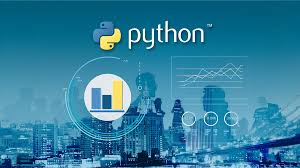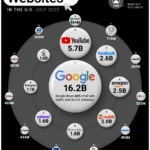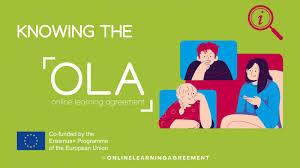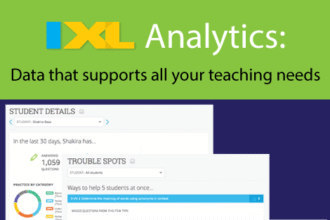From Creative to Coder: The Indispensable Rise of the Marketing Technologist
In an era saturated with data, driven by automation, and continuously reshaped by artificial intelligence, the traditional lines between marketing and technology have not just blurred; they’ve effectively merged. Welcome to the dawn of the Marketing Technologist – a hybrid professional who speaks the language of customer engagement and code, who understands brand narratives and database queries. And at the heart of this revolution, powering innovative strategies and unlocking unprecedented insights, is a programming language that has swiftly become indispensable: Python.
Gone are the days when marketing was solely about intuition and creative flair. Today, it’s a dynamic, data-driven discipline where success hinges on the ability to analyze vast datasets, automate complex campaigns, personalize customer experiences at scale, and leverage predictive analytics. This profound shift has created an urgent demand for individuals who can bridge the gap between abstract marketing goals and concrete technological solutions. This isn’t just about understanding marketing tools; it’s about building, optimizing, and integrating them. And for those looking to thrive in this new landscape, learning Python isn’t just an advantage—it’s a necessity.
This comprehensive guide will explore why Python is not merely a trending skill but the foundational language for the modern marketing technologist. We’ll delve into its unparalleled versatility, its power in data science and machine learning, and its practical applications in optimizing every facet of the marketing funnel. If you’re a marketer seeking to future-proof your career, a technologist aiming to impact business strategy, or simply someone passionate about online education learning and high-demand skills, then understanding Python’s role in marketing technology is your next crucial step. Prepare to unlock a new dimension of digital marketing prowess.
1. Decoding the Marketing Technologist: A New Breed of Innovator
The term “Marketing Technologist” might sound like corporate jargon, but it represents a crucial evolution in how businesses connect with their customers. This role isn’t just about using technology; it’s about understanding its underlying mechanics and strategic application to drive marketing outcomes.
1.1. Defining the Role: More Than Just a Power User
A marketing technologist is a professional who deeply understands both marketing principles and technological infrastructure. They are not merely users of marketing automation platforms or CRM systems; they are often responsible for their implementation, integration, customization, and optimization. This requires a blend of skills:
- Strategic Thinking: Understanding business objectives and translating them into technological requirements.
- Data Acumen: The ability to collect, clean, analyze, and interpret large datasets to inform decisions.
- Technical Proficiency: Skill in programming languages, databases, APIs, and cloud platforms.
- Problem-Solving: Identifying inefficiencies in marketing processes and developing technological solutions.
Their daily tasks can range from building custom dashboards for campaign performance, automating repetitive marketing tasks, segmenting customer databases with advanced algorithms, to integrating disparate marketing systems. They are the architects of the modern marketing stack, ensuring that technology serves the strategic vision.
1.2. The ‘Why Now?’: Forces Driving the MarTech Revolution
Several powerful trends have converged to make the marketing technologist an indispensable asset:
- Explosion of Data: Every customer interaction, from website visits to email opens, generates data. Marketing technologists harness this data, transforming raw information into actionable insights. According to IBM, 90% of the data in the world today has been created in the last two years alone. [Source: IBM, The Four V’s of Big Data]
- Proliferation of MarTech Tools: The marketing technology landscape is vast and complex, with thousands of solutions for everything from SEO to social media management. Integrating these tools and making them work seamlessly requires technical expertise. Scott Brinker’s MarTech Landscape Supergraphic, for instance, shows a staggering number of vendors, growing exponentially year over year. [Source: ChiefMarTec.com, Marketing Technology Landscape]
- Demand for Personalization at Scale: Customers expect highly personalized experiences. Delivering this across millions of touchpoints is impossible without advanced automation and data-driven segmentation.
- Rise of AI and Machine Learning: Predictive analytics, natural language processing, and computer vision are no longer futuristic concepts; they are actively shaping how marketers understand and engage with their audience.
- Focus on ROI and Measurable Results: Businesses demand clear returns on their marketing investments. Technologists provide the data infrastructure and analytical capabilities to measure and optimize these returns.
- The Cookieless Future: With increasing privacy regulations and the deprecation of third-party cookies, marketers need to build robust first-party data strategies, which are heavily reliant on advanced technological capabilities and often, custom solutions. [Source: Google Blog, Preparing for a privacy-first web]
The confluence of these factors has solidified the marketing technologist’s position as a linchpin in any forward-thinking organization. And within this role, Python has emerged as the lingua franca.
2. Why Python? The Unparalleled Advantage for Modern Marketers
In the competitive world of programming languages, Python stands out as a beacon of versatility, simplicity, and power. For marketing technologists, it’s not just a useful tool; it’s the essential tool.
2.1. The Language of Simplicity and Power
Python’s elegant syntax and readability make it relatively easy to learn, even for those without a strong programming background. This low barrier to entry is crucial for marketers who need to quickly adapt and apply technical skills. But don’t let its simplicity fool you; Python is incredibly powerful, capable of handling complex tasks from large-scale data processing to building sophisticated machine learning models. Its “batteries included” philosophy means it comes with a vast standard library, allowing developers to achieve more with less code. Many individuals embark on their journey of learning Python due to its reputation for approachability.
2.2. A Glimpse into Python’s Core Strengths for Marketing
2.2.1. Data Analysis and Visualization: Unlocking Hidden Insights
Marketing generates mountains of data: website traffic, campaign performance, customer demographics, social media engagement, purchase history. Python, with its robust ecosystem of libraries, transforms this raw data into actionable intelligence.
- Pandas: The cornerstone for data manipulation and analysis. Marketers can use Pandas to clean messy datasets, merge data from various sources (CRM, Google Analytics, social media platforms), filter customer segments, and aggregate key metrics. For example, analyzing customer churn by combining sales data with engagement metrics.
- NumPy: Essential for numerical operations, forming the backbone for many other scientific libraries.
- Matplotlib & Seaborn: Powerful libraries for creating stunning and informative data visualizations. Instead of static Excel charts, marketers can generate dynamic plots, heatmaps, and dashboards to visually represent campaign performance, customer behavior patterns, or A/B test results. Imagine creating a scatter plot to identify correlations between ad spend and conversion rates, or a time series plot to track brand sentiment over time.
- Plotly & Bokeh: For interactive visualizations that allow deeper exploration of data, ideal for presentations and detailed analysis.
With these tools, a marketing technologist can move beyond basic reporting to uncover deep insights, optimize campaigns, and understand customer journeys with unprecedented clarity. The ability to perform advanced data analysis is a cornerstone of effective online marketing.
2.2.2. Marketing Automation and API Integration: Efficiency at Scale
Repetitive tasks drain time and resources. Python excels at automation, allowing marketers to streamline workflows and integrate disparate systems.
- Web Scraping (Beautiful Soup, Scrapy): Collect data from websites, monitor competitor pricing, track mentions of your brand, or analyze content trends. For instance, scraping review sites for customer sentiment or competitor ad copy from public sources. This enables marketers to quickly gather competitive intelligence or build large datasets for analysis, skills often taught in online learning courses focused on data science.
- API Interactions: Most modern marketing platforms (Google Ads, Facebook Ads, Salesforce, HubSpot, Mailchimp) offer APIs (Application Programming Interfaces). Python allows seamless interaction with these APIs to:
- Automate Ad Campaign Management: Programmatically update bids, pause underperforming ads, create new ad groups, or pull campaign reports.
- Personalize Email Marketing: Dynamically generate email content based on customer data stored in a CRM, or segment email lists with advanced logic.
- Sync Data Across Platforms: Ensure customer data is consistent across your CRM, email platform, and advertising platforms, providing a unified customer view.
- Automate Social Media Posts: Schedule posts, monitor engagement, and analyze trends.
- Content Management: Automate content generation (e.g., pulling product descriptions from a database to populate web pages) or optimize content for SEO.
By mastering Python for automation, marketing technologists can dramatically reduce manual effort, improve accuracy, and free up time for strategic thinking. This capability is paramount for businesses scaling their online presence.
2.2.3. Predictive Analytics and Machine Learning: The Future of Personalization
This is where Python truly shines, transforming marketing from reactive to proactive. Machine Learning (ML) and Artificial Intelligence (AI) are revolutionizing how businesses understand and engage with customers. Many AI courses online free often start with Python due to its ease of use and powerful libraries.
- Scikit-learn: A comprehensive library for machine learning. Marketers can use it to build models for:
- Customer Churn Prediction: Identify customers at risk of leaving, allowing for targeted retention campaigns.
- Customer Lifetime Value (CLTV) Prediction: Forecast the revenue a customer will generate over their relationship with the brand, optimizing acquisition and retention strategies.
- Recommendation Systems: Suggest relevant products or content to customers based on their past behavior or similar users (e.g., “customers who bought this also bought…”).
- Sentiment Analysis: Analyze customer reviews, social media comments, or support tickets to gauge brand perception and identify pain points.
- Lead Scoring: Prioritize sales leads based on their likelihood to convert.
- TensorFlow & PyTorch: Libraries for deep learning, enabling the creation of more complex AI models. These are used for advanced applications like:
- Natural Language Processing (NLP): Understanding and generating human language, useful for chatbots, content summarization, and advanced sentiment analysis.
- Image Recognition: Analyzing images in user-generated content or advertising.
The ability to implement online machine learning models allows marketing technologists to move beyond historical analysis and into the realm of predictive insights, leading to highly effective and personalized campaigns. This elevates the marketing function from merely observing trends to actively shaping future outcomes.
2.2.4. Ad-Tech and Campaign Optimization: Maximizing ROI
In the world of paid advertising, every dollar counts. Python empowers marketers to optimize ad spend and campaign performance with unparalleled precision.
- Automated Bid Management: Develop custom algorithms to adjust bids on platforms like Google Ads or Facebook Ads in real-time, optimizing for CPA (Cost Per Acquisition), ROAS (Return on Ad Spend), or other key metrics.
- Audience Segmentation: Go beyond basic demographic targeting by creating highly specific customer segments based on behavioral data, purchase history, and predictive models.
- A/B Testing Automation: Programmatically set up and analyze A/B tests across various ad creatives, landing pages, or messaging to identify winning combinations.
- Fraud Detection: Identify suspicious clicks or impressions in ad campaigns to prevent budget waste.
By integrating Python into their ad-tech stack, marketing technologists can achieve superior campaign performance, ensuring that every advertising dollar delivers maximum impact.
3. Bridging the Skill Gap: Becoming a Python-Powered Marketing Technologist
The demand for marketing technologists with Python skills is skyrocketing. But how does one acquire these highly sought-after capabilities? The answer lies in structured learning and practical application, often facilitated through excellent online learning platforms.
3.1. Essential Python Skills for Marketers
To truly excel, aspiring marketing technologists should focus on these core areas of Python proficiency:
- Fundamentals of Python Programming:
- Variables, data types (strings, integers, lists, dictionaries)
- Control flow (if/else statements, for/while loops)
- Functions and modules
- Basic object-oriented programming concepts
- Data Manipulation and Analysis:
- Pandas: DataFrames, Series, reading/writing data (CSV, Excel), data cleaning, filtering, grouping, merging, pivoting.
- NumPy: Array operations, basic numerical computations.
- Data Visualization:
- Matplotlib & Seaborn: Creating various plot types (line, bar, scatter, histogram), customizing plots, subplots.
- Working with APIs:
requestslibrary for making HTTP requests to retrieve data from web services.- Understanding JSON and XML data formats.
- Introduction to Web Scraping:
Beautiful Soup: Parsing HTML/XML documents.- Basic understanding of
requestsfor fetching web pages.
- Basic Machine Learning Concepts (Scikit-learn):
- Understanding supervised vs. unsupervised learning.
- Key algorithms: Linear Regression, Logistic Regression, Decision Trees, K-Means Clustering.
- Model evaluation metrics.
While this list might seem extensive, remember that numerous free online learning platforms and resources are available to guide you through each step.
3.2. Leveraging Online Learning Platforms: Your Gateway to Expertise
The digital age has democratized education, making it easier than ever to acquire new skills. Online education learning offers flexibility, affordability, and access to world-class instructors. For learning Python and related marketing tech skills, numerous platforms stand out:
- Coursera: Offers specialized courses and “Specializations” from top universities and companies. You can find comprehensive programs on Python for Data Science, Machine Learning for Marketing, and even broader Data Science tracks. Look for “Python for Everybody” from the University of Michigan or “Applied Data Science with Python” from the University of Michigan. Many online learning courses here are highly reputable.
- edX: Similar to Coursera, edX provides university-level courses, often with verified certificates. Programs like “Data Science with Python” from Harvard or MIT are highly valued.
- LinkedIn Learning (formerly Lynda.com): A vast library of video tutorials covering almost every software and skill imaginable. Excellent for practical, project-based learning Python for data analysis, web scraping, and automation. Many professionals leverage LinkedIn Learning for continuous upskilling.
- Udemy: A marketplace for online courses taught by independent instructors. You’ll find a massive selection, from beginner Python to advanced machine learning for marketing, often at competitive prices. It’s a great place for practical, hands-on projects.
- Codecademy: Known for its interactive learning environment where you write code directly in the browser. Ideal for beginners to grasp Python fundamentals and get immediate feedback.
- DataCamp & Dataquest: These platforms are specifically designed for data science and analytics, offering structured learning paths with interactive exercises focused on Python, R, and SQL. They are fantastic for hands-on python learning online.
- Google’s AI courses online free: Google offers various free courses and resources on AI and machine learning, many of which use Python. These can be found on platforms like Google AI Education or through their broader developer resources.
- Khan Academy: While more general, it provides excellent foundational math and computer science concepts that support Python learning.
- FreeCodeCamp: Offers extensive free courses and certifications in web development and data science, including Python. A highly community-driven platform.
- O’Reilly Online Learning: Offers books, videos, and live training from industry experts, covering advanced topics in Python, data science, and AI. This is a premium platform for in-depth learning.
When choosing an online learning platform, consider your learning style, budget, and career goals. Many offer free online courses or trial periods, allowing you to explore before committing. Don’t forget that consistent practice, even through online learning games for 5-year-olds (though perhaps not for Python!), reinforces learning. The key is to find a structured path and stick with it. Even institutions like CPA Australia and programs like CPA online learning emphasize the need for continuous professional development, underscoring the value of these platforms.
3.3. Practical Application and Portfolio Building
Theoretical knowledge is only half the battle. To solidify your skills and demonstrate your capabilities to potential employers, you need to build a portfolio of projects.
- Personal Projects:
- Automate your own marketing tasks: Set up a script to pull Google Analytics data weekly, generate a report, and email it to yourself.
- Analyze publicly available datasets: Use Python to analyze marketing trends from data.gov, Kaggle, or other open-data sources. Visualize your findings.
- Build a simple lead scoring model: Using dummy customer data, classify leads as “hot,” “warm,” or “cold.”
- Scrape product reviews: Analyze sentiment for a specific product or brand.
- Contribution to Open Source: Get involved in open-source projects related to marketing technology or data science.
- Case Studies: Document your projects, explaining the problem you solved, the Python tools you used, your methodology, and the insights or results you achieved.
- Participate in Hackathons: Apply your skills in a competitive, collaborative environment.
A strong portfolio is tangible proof of your abilities and a powerful differentiator in the job market. It shows that you’re not just a passive learner but an active problem-solver.
4. The Future is Now: Impact on Marketing Teams and Careers
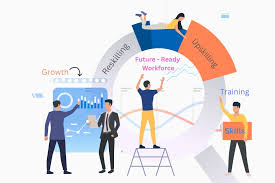
The rise of the marketing technologist, fueled by Python, is fundamentally reshaping the marketing landscape, impacting team structures, individual career paths, and the strategic direction of businesses.
4.1. Reshaping Marketing Teams: Collaboration and Integration
Modern marketing teams are becoming increasingly cross-functional. The marketing technologist acts as a crucial bridge:
- Between Marketing and IT: Ensuring that marketing’s technological needs are met and that IT understands marketing’s strategic goals.
- Between Data Science and Creative: Translating data-driven insights into creative campaigns that resonate with target audiences.
- Empowering Other Marketers: Building tools and dashboards that allow less technical marketers to access and utilize data effectively, thereby democratizing data access within the team.
This integration leads to more cohesive strategies, more efficient execution, and a deeper understanding of the customer across the organization. It allows for the seamless flow of information between different marketing functions, leading to more agile and responsive campaigns.
4.2. Career Evolution: New Roles and Opportunities
For individuals, mastering Python opens doors to a plethora of high-demand and high-paying roles:
- Marketing Technologist/MarTech Specialist: Directly applying Python to manage, integrate, and optimize the marketing stack.
- Growth Hacker: Leveraging data and automation to drive rapid customer acquisition and retention.
- Data-Driven Marketer: Focusing on advanced analytics to inform marketing strategy.
- Marketing Data Scientist: Building predictive models and machine learning algorithms for marketing applications.
- Analytics Engineer (Marketing Focus): Building and maintaining the data pipelines and infrastructure for marketing analytics.
- Product Marketer (with technical skills): Using data to understand user behavior and inform product development and messaging.
These roles often command higher salaries due to the specialized nature of the skills involved. Furthermore, the ability to combine marketing intuition with technical prowess makes these professionals invaluable to businesses seeking a competitive edge. This is a path of significant career growth for anyone involved in online education learning for advanced skills.
4.3. Strategic Implications for Businesses
Companies that embrace the marketing technologist and Python gain significant advantages:
- Increased ROI: More precise targeting, optimized campaigns, and reduced manual effort lead to better returns on marketing investment.
- Deeper Customer Understanding: Predictive analytics and advanced segmentation create a granular view of customer needs and behaviors.
- Enhanced Personalization: Delivering relevant content and offers at scale, significantly improving customer experience and loyalty.
- Agility and Innovation: The ability to rapidly test new ideas, implement new technologies, and adapt to market changes.
- Competitive Advantage: Outpacing competitors who rely on traditional, less data-driven approaches.
The strategic integration of Python-powered marketing technology is no longer a luxury but a fundamental component of sustainable business growth in the digital age.
5. Overcoming Challenges and Maximizing Your Learning Journey
Embarking on the journey to become a Python-powered marketing technologist is exciting, but like any significant learning endeavor, it comes with its challenges. Knowing how to navigate them will ensure your success.
5.1. Common Hurdles in Learning Python for Marketers
- Initial Overwhelm: The sheer volume of libraries and concepts can be daunting. Start with the basics and build incrementally.
- Lack of Immediate Application: It can be frustrating when you learn concepts but don’t immediately see how they apply to your marketing tasks. Focus on project-based online learning courses that bridge this gap.
- Debugging Frustration: Code rarely works perfectly on the first try. Patience and persistence in debugging are crucial skills.
- Staying Updated: Python and its libraries evolve rapidly. Continuous online education learning is key.
5.2. Strategies for Effective Learning and Retention
- Start with a Clear Goal: Define what you want to achieve with Python in marketing. Do you want to automate reporting? Build a recommendation engine? This focus will guide your learning path.
- Hands-on Practice is Paramount: Don’t just watch tutorials; code along. Experiment, break things, and fix them. Learning Python is best done by doing.
- Join a Community: Online forums (Stack Overflow, Reddit communities like r/learnpython, r/datascience), local meetups, and online groups provide support, answers, and inspiration. This fosters a sense of shared journey in my online learning.
- Build Projects (Even Small Ones): Apply what you learn immediately. Automate a simple spreadsheet task, scrape data from a favorite website, or visualize some public marketing data.
- Focus on Relevant Libraries: You don’t need to learn every Python library. Prioritize Pandas, Matplotlib/Seaborn, Requests, and Scikit-learn for marketing applications.
- Understand the “Why”: Connect the technical skill back to a marketing problem. How will this script save time? How will this model improve campaign performance?
- Consistency over Intensity: Short, regular practice sessions are often more effective than infrequent, long ones.
- Leverage Free Resources: Platforms like free online learning platforms (FreeCodeCamp, Codecademy’s free tiers, Google AI Education, YouTube tutorials) offer incredible value.
- Consider a Mentor: If possible, connect with someone more experienced who can guide you.
Platforms like IXL Learning are great for fundamental skills, even if more geared towards younger audiences, they highlight the value of structured, practice-based learning. For advanced learners, activate learning online through challenges and complex projects.
5.3. Continuing Your Education: Lifelong Learning in MarTech
The MarTech landscape is constantly evolving. What’s cutting-edge today might be standard practice tomorrow. Embrace lifelong learning:
- Follow Industry Leaders: Read blogs, listen to podcasts, and attend webinars from prominent marketing technologists and data scientists.
- Experiment with New Tools: Keep an eye on emerging Python libraries, AI models, and marketing platforms.
- Attend Conferences (Virtual or In-Person): Stay abreast of the latest trends and network with peers.
- Deep Dive into Specific Areas: Once you have a strong foundation, specialize in areas like advanced NLP for marketing, deep learning for personalization, or serverless functions for marketing automation.
- Explore Related Fields: Understanding cloud computing (AWS, Azure, Google Cloud), database management (SQL), and web development fundamentals (HTML, CSS, JavaScript) will further enhance your capabilities as a marketing technologist.
Your online learning hub should be a dynamic space, constantly updated with new skills and insights. Whether it’s through learning online QLD Health initiatives or more general online learning NSW platforms for professional development, the principle remains the same: continuous growth is vital.
Conclusion: Python – Your Blueprint for Marketing Mastery
The journey from traditional marketer to Python-powered marketing technologist is not merely a career pivot; it’s an ascent to a new echelon of strategic influence and operational efficiency. We’ve explored how Python’s unparalleled versatility in data analysis, automation, and machine learning empowers marketers to move beyond guesswork and into the realm of precise, data-driven, and highly personalized customer engagement.
From dissecting intricate datasets with Pandas and visualizing trends with Matplotlib, to automating complex ad campaigns via APIs and predicting customer churn with Scikit-learn, Python provides the technical blueprint for digital dominance. It’s the language that transforms marketing challenges into solvable code, and abstract goals into measurable outcomes.
The opportunity to master these skills is more accessible than ever, thanks to a wealth of online learning platforms like Coursera, edX, LinkedIn Learning, and Udemy, which offer a spectrum of online learning courses—from free online learning introductions to comprehensive certifications. This democratized access means that anyone with dedication can embark on a journey of learning Python and reshape their professional trajectory.
As the digital world continues to evolve at a breakneck pace, the demand for professionals who can marry marketing acumen with technical prowess will only intensify. The marketing technologist, armed with Python, is not just adapting to the future; they are actively building it. Embrace this shift, invest in your online education learning, and position yourself at the forefront of marketing innovation. Your future, and the future of marketing, is undoubtedly coded in Python.


